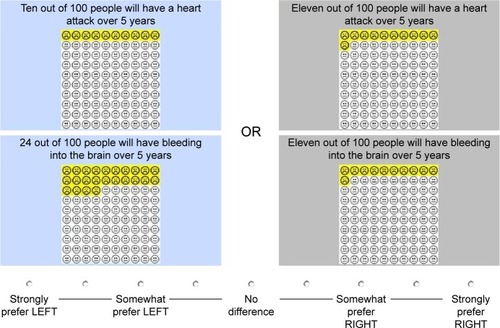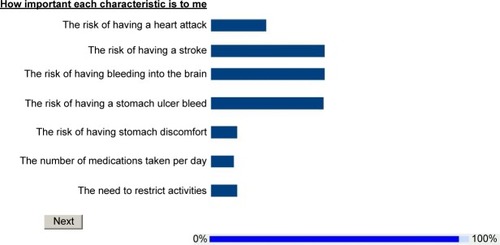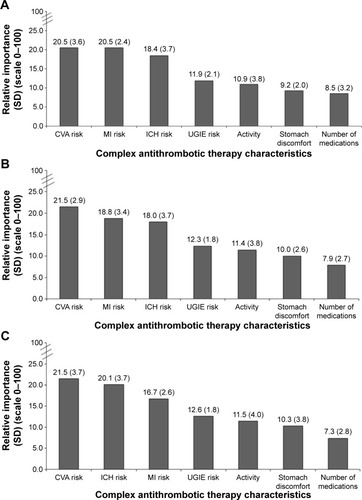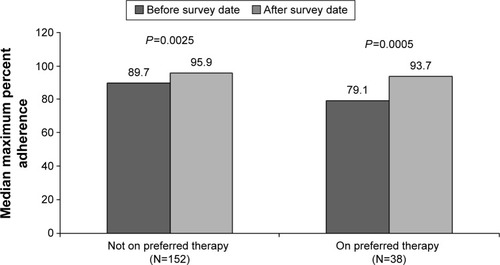Figures & data
Figure 1 Example of adaptive conjoint analysis trade-off question.

Figure 2 Example of graphical representation of preferences for complex antithrombotic therapy (CAT) medication attributes.

Table 1 Patient characteristics (N=202)
Figure 3 (A) Relative importance of CAT characteristics among patients age 60–69 years. (B) Relative importance of CAT characteristics among patients aged 70–79 years. (C) Relative importance of CAT characteristics among patients age >80 years.

Table 2 Patient utilities for CAT characteristics stratified by age cohort
Table 3 Treatment preferences for CAT strategies (N=201) stratified by age cohort
Figure 4 Change in medication adherence from baseline to 1-year after completing the preference-elicitation survey, stratified by whether participants were receiving their preferred CAT therapy (N=190).

Table S1 Patient perception of preference-elicitation exercise (N=56)

